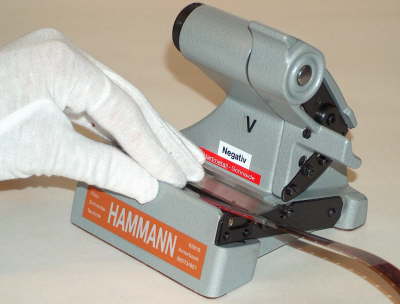Arjay
Time Traveller
I agree with you on the scissors issue - I started out using special scissors made for embroidering too.For cheap, very short scissors with 1" blades. The shorter the better because long = wide and makes shadows and you can`t see. They are sold as moustach trimmers, but good sewing scissors for cutting thread will also work.
Long wide blades do not work well.
With a bit more effort to find, a Hamma slide cutter does a perfect job every time. built in back light so you cab see the frame with a guide line etched so I can see there the cutter will make the cut. The cutter is positioned on guide rails so it is always accurate.
Any slide cutter should do.
Since I'm quite far-sighted, my cuts usually don't end up where they are supposed to be, so I prefer slide cutters. The only problem, then, is to determine the right place where to cut - not that easy for negatives in which one sometimes cannot discern inter-frame bars from film base colored shadow areas.
The Hama cutter is a very similar design to the Kaiser cutter, featuring a translucent white, back-illuminated base plate. They both share the problem that they feature retaining rails which cover the numbering and the sprocket holes, only offering visibility to the actual image frames. The reason they do is in the cutters' film transport mechanism which consists of a rubber friction wheel that is located below one of the rails. The rail acts as a counter surface for the wheel.
Fortunately, the end-of-frame marks for 24 x 36mm film are not located directly opposite to the place where the friction wheel is countered by the rail on the other side of the film.
I envision cutting away the rail directly on the location of the 36mm end-of-frame mark to expose the sprocket holes and the film numbers, and to cut a groove across the opaque white back-illuminated plate below the film. I guess I could fill that groove with a little black paint to make it more visible.
Has anyone done something like that before?
Last edited:


